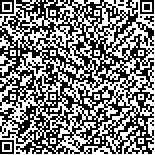| 引用本文: | 童凯,周建庭,赵瑞强,吴礼舟,张森华.反复拉伸加载下钢筋力磁耦合效应[J].建筑材料学报,2023,26(7):771-782 |
| |
|
| |
|
|
| 本文已被:浏览 124次 下载 272次 |

码上扫一扫! |
|
|
| 反复拉伸加载下钢筋力磁耦合效应 |
|
童凯1,2,周建庭1,2,赵瑞强3,吴礼舟1,2,张森华1,2
|
|
1.重庆交通大学 山区桥梁及隧道工程国家重点实验室,重庆 400074;2.重庆交通大学 土木工程学院,重庆 400074;3.重庆交通大学 材料科学与工程学院,重庆 400074
|
|
| 摘要: |
| 为探究钢筋的力磁耦合特性,开展反复拉伸试验,研究了钢筋应力σ、应变ε与漏磁强度法向分量BZ之间的关联,引入了“应力变化参量”σN与“漏磁强度变化参量”BN.结果表明:钢筋反复拉伸过程中ε值与BZ值均具有可逆性,且应变幅的增大使得BZ变化速率减小;σ与BZ的波动周期相同,波动方向相反;不同反复拉伸阶段下应力幅与漏磁强度变化率的比例关系一致,且相对偏差率小于9.40%;σN与BN呈线性关系,拟合直线斜率接近1.000,表明应力幅变化率与漏磁强度变化率相对等;仿真分析与试验结果吻合. |
| 关键词: 钢筋 反复拉伸 应力 应变 漏磁强度 力磁耦合 |
| DOI:10.3969/j.issn.1007-9629.2023.07.010 |
| 分类号:TU511.3 |
| 基金项目:国家自然科学基金资助项目(U20A20314,52278291);重庆市杰出青年科学基金资助项目(cstc2020jcyj-jqX0006) |
|
| Force-Magnetic Coupling Effect of Steel Bars under Repeated Tensile Loading |
|
TONG Kai1,2, ZHOU Jianting1,2, ZHAO Ruiqiang3, WU Lizhou1,2, ZHANG Senhua1,2
|
|
1.State Key Laboratory of Mountain Bridge and Tunnel Engineering, Chongqing Jiaotong University, Chongqing 400074, China;2.School of Civil Engineering, Chongqing Jiaotong University, Chongqing 400074, China;3.School of Materials Science and Engineering, Chongqing Jiaotong University, Chongqing 400074, China
|
| Abstract: |
| Repeated tensile experiments were carried out to explore the force-magnetic coupling properties of steel bars. The correlation between stress σ, strain ε, and normal component magnetic leakage intensity BZ was investigated. The “stress variation parameter” σN and the “magnetic leakage intensity variation parameter” BN were introduced. The results indicate that both ε values and BZ values are reversible during steel bar repeated tensile processes. The increase in strain amplitude reduces the change rate of BZ. The fluctuation periods of σ and BZ are the same, and the fluctuation directions are opposite. The proportional relationship between the stress amplitude and the variation of magnetic leakage intensity at different repeated tensile stages is consistent. The relative deviation rate is less than 9.40%. σN is linearly related to BN with a slope approximating 1.000. It demonstrates the equivalent relationship between the variation rate of the stress amplitude and the variation rate of the magnetic leakage intensity. The simulation analysis coincides with the experimental results. |
| Key words: steel bar repeated tensile stress strain magnetic leakage intensity force-magnetic coupling |
|